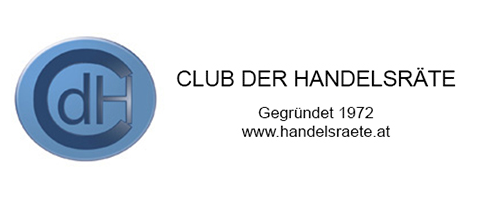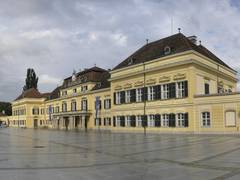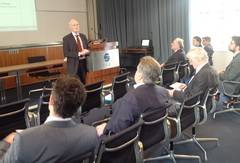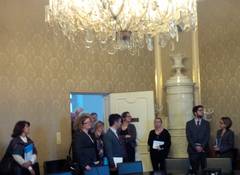IIASA
The first CdH event in 2016 was a visit to IIASA, the International Institute for Applied Systems Analysis, headquartered at Schloss Laxenburg, immediately south of Vienna.
Founded in the same year as the Club for Trade Delegates was founded, in 1972, the scientific research institute conducts policy-oriented research into problems of a global nature that are too large, too broad, or too complex to be solved by a single country or academic discipline.
Prof. Dr. Pavel Kabat, Director General and CEO of IIASA, gave the Trade delegates a warm welcome and insights into the institute's history in relation to the motto "Systems Science and Science Diplomacy to Support Global Development".
In October 1972 representatives of the Soviet Union, United States, and 10 other countries from the Eastern and Western blocs met in London to sign the charter establishing the International Institute for Applied Systems Analysis (IIASA). It was the culmination of six years' effort by US President Lyndon Johnson and USSR Premier Alexey Kosygin, and marked the beginning of a remarkable project to use scientific cooperation to build bridges across the Cold War divide and to confront growing global problems on an international scale.
IIASA is - and always has been - an independent institution at which to meet. It is sponsored by its 22 national member organizations in Africa, Asia, Europe, Oceania and the Americas. Its research is independent and completely unconstrained by political or national self-interest.
About 3,500 people are connected within this network and about 2,500 researchers all over the world conduct policy-oriented research into the most pressing areas of global change - such as energy and climate change, food and water, poverty and inequity - and their main drivers. IIASA research is problem-driven and solution-oriented, conducted with policy relevance as its main principle.
All program work uses advanced systems analysis to examine the complex systems which are at the heart of today's complex global challenges. In his presentation "Systemic Trade Risk of Critical Resources", Peter Klimek gave an example regarding rare minerals in relation to an ongoing project concerning network dynamics.
Systemic Risk and Network Dynamics examines how different types of systems, ranging from financial to ecological and beyond, face the risk of cascades of failures. Systemic risk describes the likelihood of an entire system breaking down - a situation caused by cascades of failures in the networks that make up the system. This cross-cutting project aims to develop methods to measure and reduce systemic risk and to provide tools to assess the potential for system collapse, incorporating considerations of uncertainty.
The final highlight of the CdH-visit was a guided tour of the palace and the IIASA facilities. The 17th century former imperial palace was once a summer retreat of the Habsburgs. At the end the programme the trade delegates had the opportunity for discussion with IIASA management and search staff, enjoying light refreshments in the atmosphere of the ancient palace.








